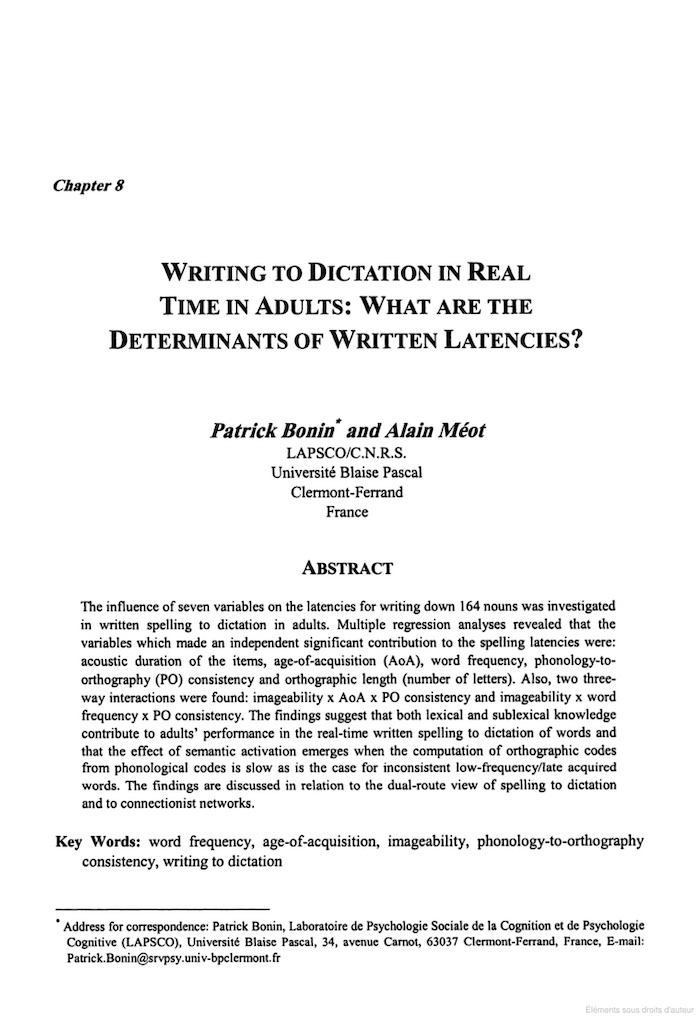The influence of seven variables on the latencies for writing down 164 nouns was investigated in written spelling to dictation in adults. Multiple regression analyses revealed that the variables which made an independent significant contribution to the spelling latencies were: acoustic duration of the items, age-of-acquisition (AoA), word frequency, phonology-topography (PO) consistency and orthographix length (number of letters). Also, two three-way interactions were found: imageability x AoA x PO consistency and imageability x word frequency x PO consitency. The findings suggest that both lexical and sublexical knowledge contribute to adults’ performance in the real-time written spelling to dictation of words and that the effect of semantic activation emerges when the computation of orthographic codes from phonological codes is slow as is the case for inconsistent low-frequency/late acquired words. The findings are discussed in relation to the dual-route view of spelling to dictation and to connectionist networks.
Writing to dictation in real time in adults: What are the determinants of written latencies?
